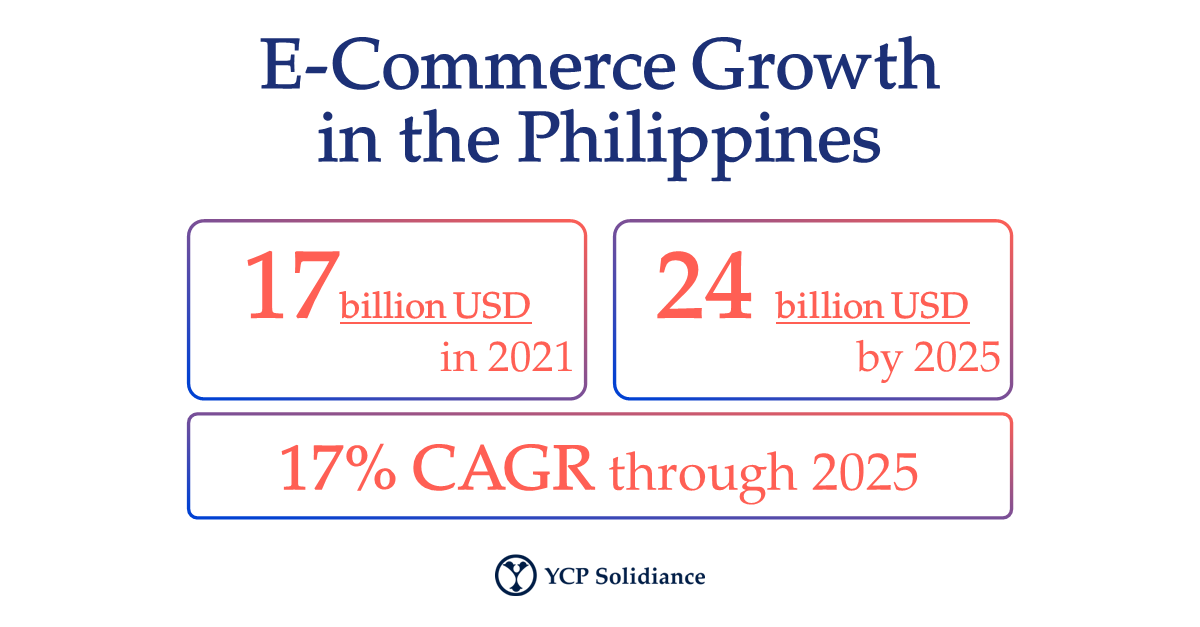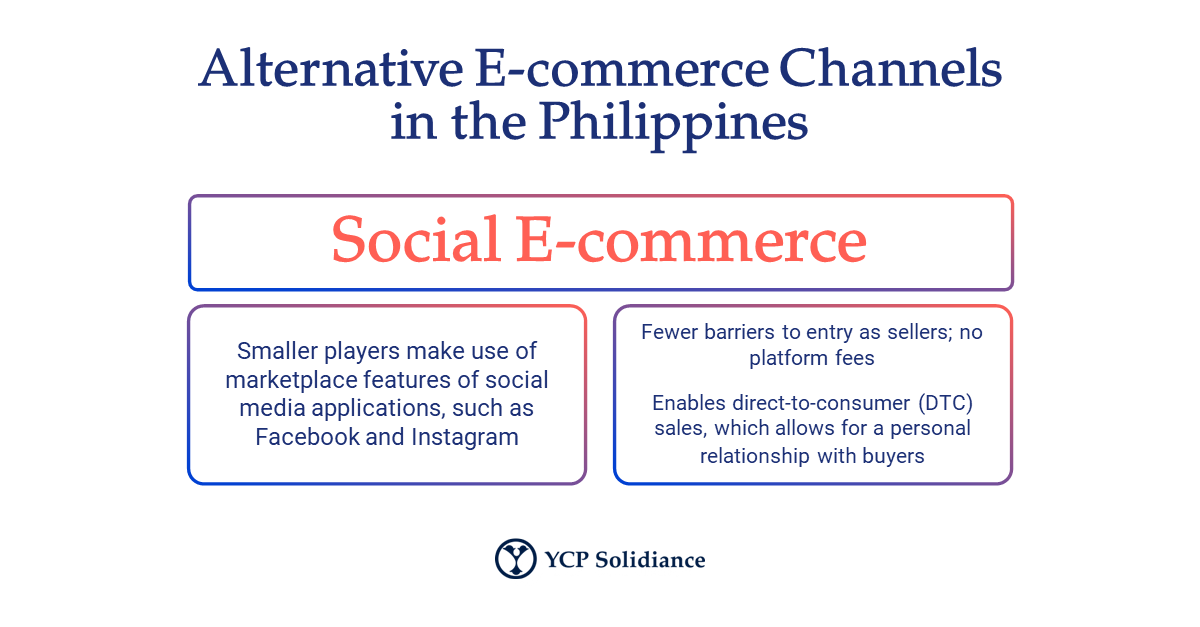What should businesses and professionals in the Philippines expect in the second half of 2022? As part of a new series, YCP Solidiance will be releasing several in-depth articles that revisit previously analyzed emerging business trends in the Philippines, guided by research and analysis from our team of professionals in the country. Read the first issue here.
Read the third installment below to learn more about the current landscape of the e-commerce industry in the Philippines and its outlook for the second half of 2022 and early 2023. To read future installments of this series, subscribe to our newsletter here.
In the Philippines, industries have undergone accelerated development due to the country’s interest in digitalization. One such industry that has benefitted is the e-commerce sector, which has grown significantly during the pandemic.
For Q3 and Q4 of 2022 and early 2023, interested parties should expect e-commerce to continue to trend in the Philippines, especially given continued government support and the emergence of more micro, small, and medium enterprises (MSMEs) on digital platforms.

Considering that the success of the e-commerce industry relies heavily on the digital activation of consumers, factors such as internet penetration and social media are relevant as they may be regarded as key indicators of e-commerce’s potential.
Based on a 2022 report by DataReportal, research revealed that the internet penetration rate in the Philippines stood at 68%, wherein a 2.8% increase was registered between 2021 and 2022. Moreover, the same report found over 92 million social media users in the Philippines as of January 2022, with 3.1 million new users activating within the past year. The digital ecosystem of the Philippines has not only bolstered the accelerated development of e-commerce over the pandemic, but perhaps more importantly, it will also bolster involved parties to realize the potential of the e-commerce industry.
Despite already having an environment conducive to market growth, the e-commerce ecosystem in the Philippines is still evolving through the diversification of marketplaces available to both sellers and buyers. As compared to 2021, early 2022 saw a shift in the Philippine e-commerce landscape as the industry became more inclusive and accessible for smaller players operating independently and outside of e-commerce conglomerates like Shopee and Lazada.
Moreover, excluding digital advertising costs and platform fees for big e-commerce platforms, smaller businesses that wish to enter the e-commerce space now face fewer barriers because of the emergence of Facebook Marketplace, Instagram shops, Shopify, Cococart, and other alternative online marketplaces.
The migration of e-commerce to social media platforms provides several advantages, namely: (1) a direct-to-consumer dynamic wherein sellers eliminate middlemen; (2) social platforms allowing for a new medium of customer engagement; and (3) being virtually costless to advertise products on social media marketplaces. Such benefits will entice interested parties to explore social commerce in the future, thus helping to expand the Philippine e-commerce economy.

Moving forward, the diversification of the e-commerce industry in the Philippines will facilitate the entry of new sellers and buyers, which only serves to sustain the growth of the entire e-commerce market. It is likely that e-commerce players present in the Philippines will help continue the diversification of the e-commerce ecosystem as many will explore an omnichannel approach wherein they will offer their products on both social marketplaces and big e-commerce platforms.
The future success of the e-commerce industry in the Philippines will also depend highly on the collaboration between the public and private sectors. For instance, Philippine government agencies like the Department of Trade and Industry (DTI) have launched several versions of the “Philippine E-commerce Roadmap” to promote the growth of the industry. Such roadmaps will help sustain long-term success, while also ensuring security and inclusivity for those involved.
Given the continued interest of stakeholders involved, the emergence of alternative e-commerce channels, and the government’s support, the success experienced by the e-commerce industry in the Philippines will likely be sustained well after the second half of 2022. With early 2023, expect Philippine e-commerce to experience a significant boost as many will look to involve themselves and capitalize on the accelerated development in the new year.
